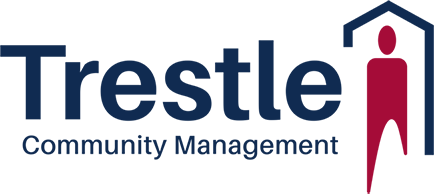How to Adjust Community Services to Fit the HOA Fee Amount
Updated March 8, 2022
If your homeowners association fees have been in place for a while, you may have noticed they haven’t changed since the community was built. When community fees are not updated from time to time, they can become a problem for community residents and the community itself.
However, when homeowners feel like the fees are too high or they’ve gradually increased over the years, it might be time to review the services provided by the homeowners association and ensure they meet the community’s needs and budget. Our community association management company experts have some insights into adjusting services to fit reasonable association fees!

%20(S).jpg)
Why High HOA Management Fees Can Be Bad
Homeowners associations or condominium associations boards have the tough job of analyzing fees vs. the services provided by the association to ensure residents are happy with what they pay. When residents feel like they pay too much for their HOA management fees–without receiving comparable services to justify the costs–they become unhappy. In some cases, they might withhold fees until the board reviews the budget and makes adjustments.
High HOA fees can also deter new homeowners from purchasing in your community. If a nearby neighborhood has lower fees and delivers the same services and experience found in your community, they’ll choose the neighborhood with lower fees.
Association boards need to set the HOA’s fees at a competitive rate without sacrificing the quality of life for residents. Fees that are too low can support the budget, while high fees can lead to losing community members and a lack of growth.
How To Adjust Services to Fit HOA Fees:
No matter what the amount of your regular HOA dues, they must make sense for the type and volume of services and amenities and the safety of your community. Many homeowners associations find that their development changes over time, meaning there will be different needs within the community. To keep your community thriving and in demand, this can lead to higher costs per resident as amenities or services need improvements.
On average, community associations should review HOA fee amounts every three years. In reviewing the budget, you should make sure high routine dues aren’t out-pacing community growth or needs. When homeowners leave because dues become too high (without justification), homeowners associations won’t have enough residents to pay fees and support annual budgets.
Make Adjustments
We’ve talked about the importance of raising fees and the right time to do that. However, sometimes community associations might have to make difficult decisions to lower fees and cut costs to keep residents happy.
To cut costs where necessary, consider:
- Postponing a major upcoming development for a few years. If it’s not a critical addition to the community, it can wait.
- Cutting back on landscaping in less-used community areas. It’s important to keep landscaped areas looking nice, but low-maintenance bushes or flowers could be a cost-saving measure in areas off the beaten path.
- Reducing services during off-seasons. For example, during the colder months when pool usage is less frequent, consider closing it down to reduce pool cleaning and maintenance costs.
- Reviewing insurance premiums. It might be time to shop for lower HOA insurance prices.
- Evaluating property management company services and fees. If you outsource a property manager to maintain structures and deliver community maintenance services, talk with them about reducing those services short-term.
These changes will save money without drastically reducing your community’s quality of life since they won’t affect as many people as other decisions might. In addition, placing some “extra” amenities into a “luxury” category to help residents choose their level of HOA dues can address multiple needs while protecting your association’s budget.
%20(S).jpg?width=1200&name=Happy%20Mother%20Carrying%20Baby%20Boy%20At%20Park%20(R)%20(S).jpg)
Address Community Feedback About the HOA Management Fee
When closing the pool or reducing other services that aren’t widely used by all homeowners, you might get some pushback from the few residents who do enjoy those services. In this case, HOA boards can consider add-on fees for members who want to keep these services or access to the pool year-round.
Boards can also discuss budget issues and concerns about monthly management fees with residents during regular community meetings. Being transparent about what HOA dues cover, budgeting, accounting, and potential fee changes helps build positive relationships between the board and neighborhood homeowners.
Get Professional Community Association Management Insights
Ultimately, community boards need to do what is best for their residents. Homeowners association fees can go up over time, but community associations need to make service adjustments as needed. If community boards are forthcoming about why they are making these changes or plan to do so in the near future, residents will be more understanding.
A professional HOA management company is an excellent resource to get professional support to utilize when reviewing budgets, annual plans, and homeowners association fees. Trestle Community Management helps HOA board members understand the needs of their communities and support services that keep residents happy and maintain reasonable HOA fees per household. Reach out to learn more about our financial or full management services for homeowners and condo associations!



